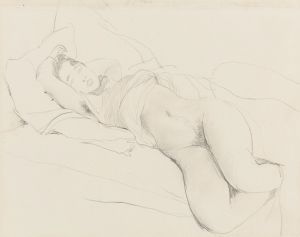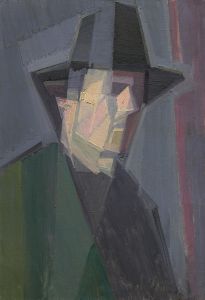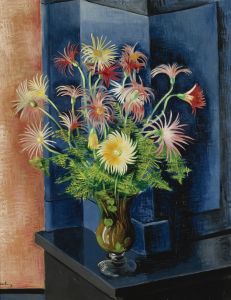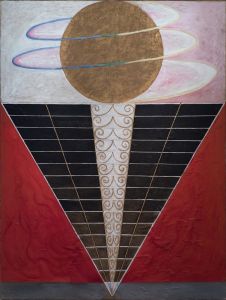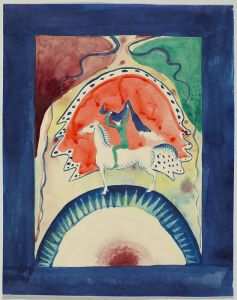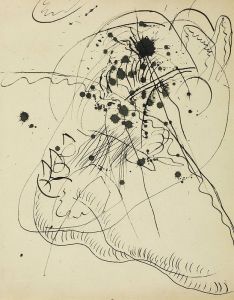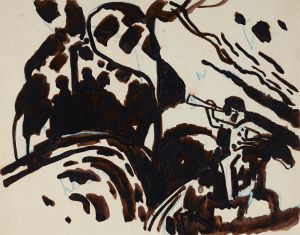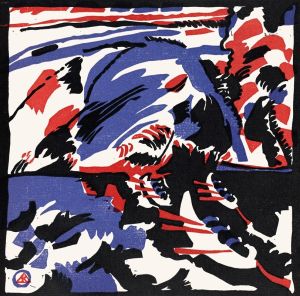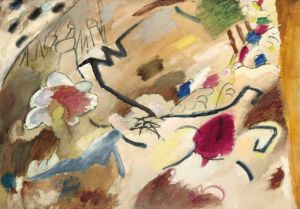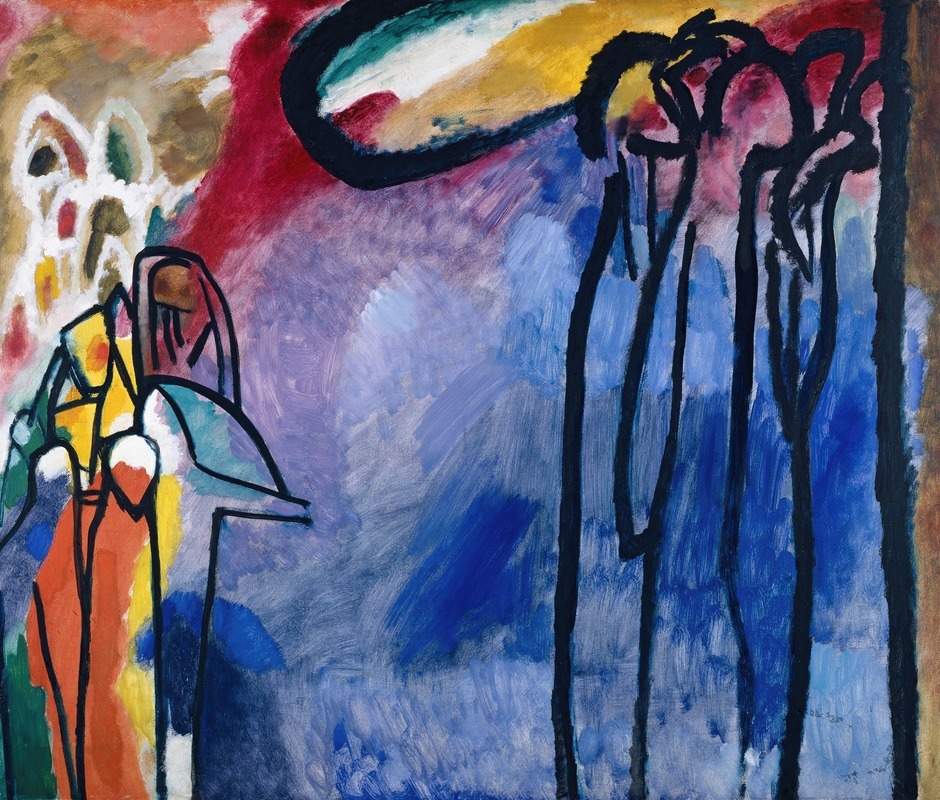
Improvisation 19
A hand-painted replica of Wassily Kandinsky’s masterpiece Improvisation 19, meticulously crafted by professional artists to capture the true essence of the original. Each piece is created with museum-quality canvas and rare mineral pigments, carefully painted by experienced artists with delicate brushstrokes and rich, layered colors to perfectly recreate the texture of the original artwork. Unlike machine-printed reproductions, this hand-painted version brings the painting to life, infused with the artist’s emotions and skill in every stroke. Whether for personal collection or home decoration, it instantly elevates the artistic atmosphere of any space.
Improvisation 19 is a painting by the Russian artist Wassily Kandinsky, created in 1911. Kandinsky is often credited as one of the pioneers of abstract art, and his work during this period reflects his deep interest in the spiritual and emotional power of color and form. Improvisation 19 is part of a series of works that Kandinsky referred to as "Improvisations," which were intended to capture spontaneous, intuitive expressions of inner feelings and experiences.
The painting is characterized by its vibrant use of color and dynamic composition. It features a complex interplay of shapes and lines that seem to float and interact on the canvas, creating a sense of movement and energy. The colors are bold and varied, with bright yellows, blues, reds, and greens dominating the scene. This use of color was central to Kandinsky's artistic philosophy, as he believed that colors could evoke specific emotions and spiritual responses in the viewer.
Kandinsky's Improvisations were influenced by his interest in music, particularly the works of composers like Richard Wagner and Arnold Schoenberg. He often drew parallels between painting and music, suggesting that just as music could convey emotions without relying on representational forms, so too could abstract art. In this sense, Improvisation 19 can be seen as a visual symphony, where colors and forms interact in a harmonious and expressive manner.
The year 1911 was a significant one for Kandinsky, as it marked the founding of the Blue Rider (Der Blaue Reiter) group, an association of artists that included Franz Marc, August Macke, and Paul Klee, among others. The group was united by a shared interest in exploring new artistic expressions and breaking away from traditional representational art. Improvisation 19 reflects the innovative spirit of the Blue Rider group, with its emphasis on abstraction and the emotional potential of art.
Kandinsky's theoretical writings, particularly his book "Concerning the Spiritual in Art," published in 1911, provide important context for understanding Improvisation 19. In this work, Kandinsky articulated his belief that art should transcend mere representation and instead seek to express deeper spiritual truths. He argued that abstract forms and colors could communicate these truths more effectively than realistic depictions of the physical world.
Improvisation 19 is housed in the Städtische Galerie im Lenbachhaus in Munich, Germany, which holds one of the most significant collections of works by the Blue Rider artists. The painting is an important example of Kandinsky's early abstract style and his efforts to create a new visual language that could convey the ineffable aspects of human experience.
In summary, Improvisation 19 by Wassily Kandinsky is a seminal work of early abstract art, reflecting the artist's interest in the spiritual and emotional power of color and form. Created in 1911, it is part of a series of paintings that emphasize spontaneous expression and draw inspiration from music. The painting is closely associated with the Blue Rider group and Kandinsky's theoretical writings on the spiritual potential of art. Today, it remains a key piece in the study of Kandinsky's contributions to modern art and his pioneering role in the development of abstraction.





